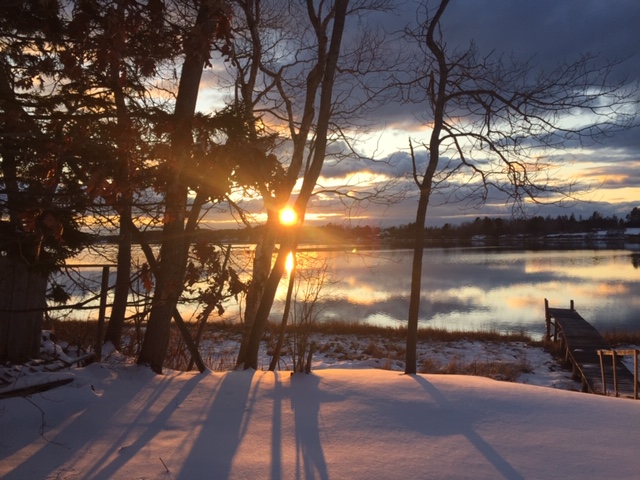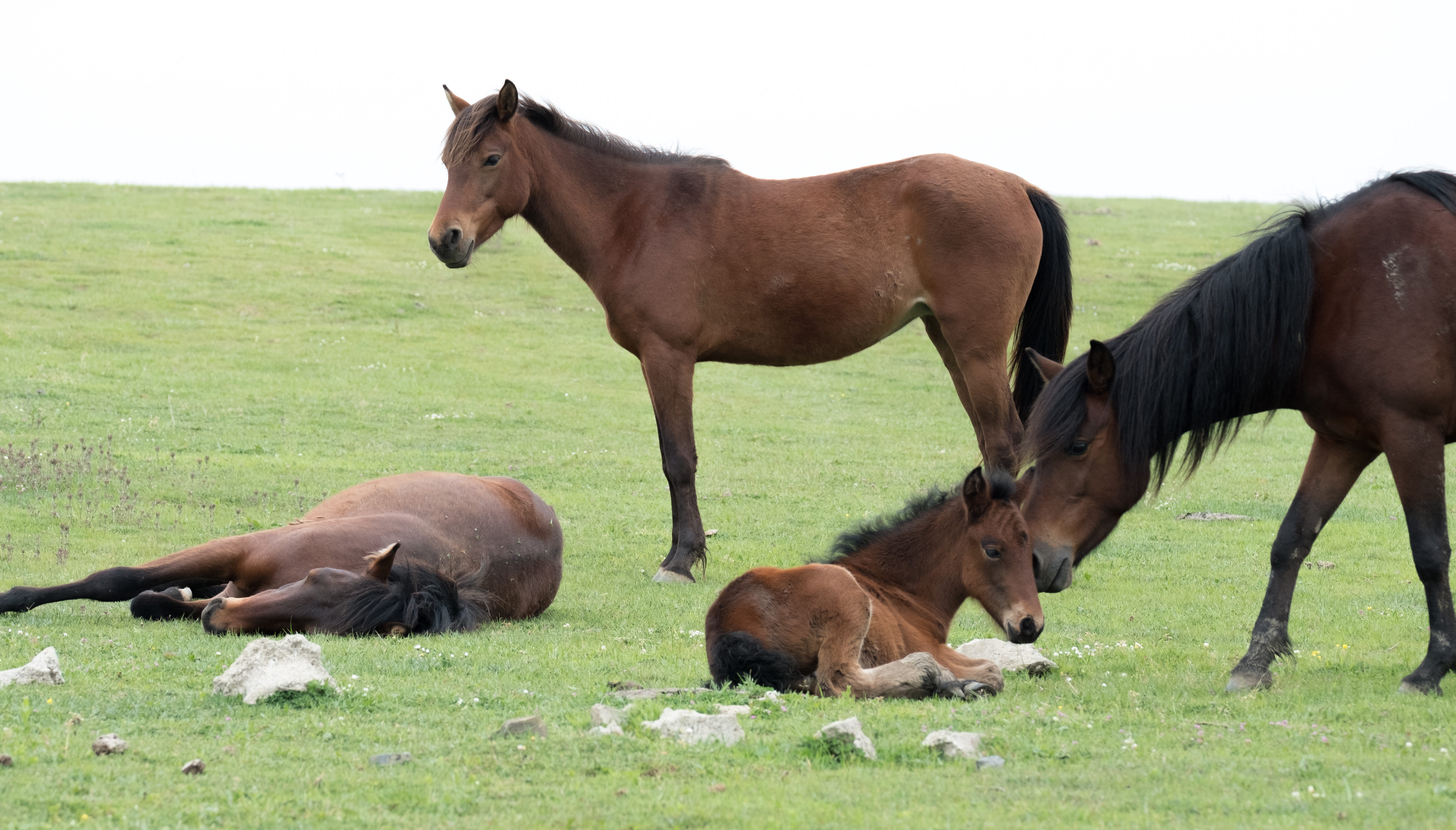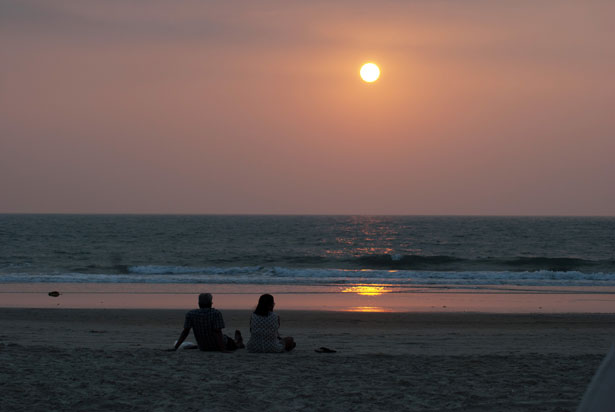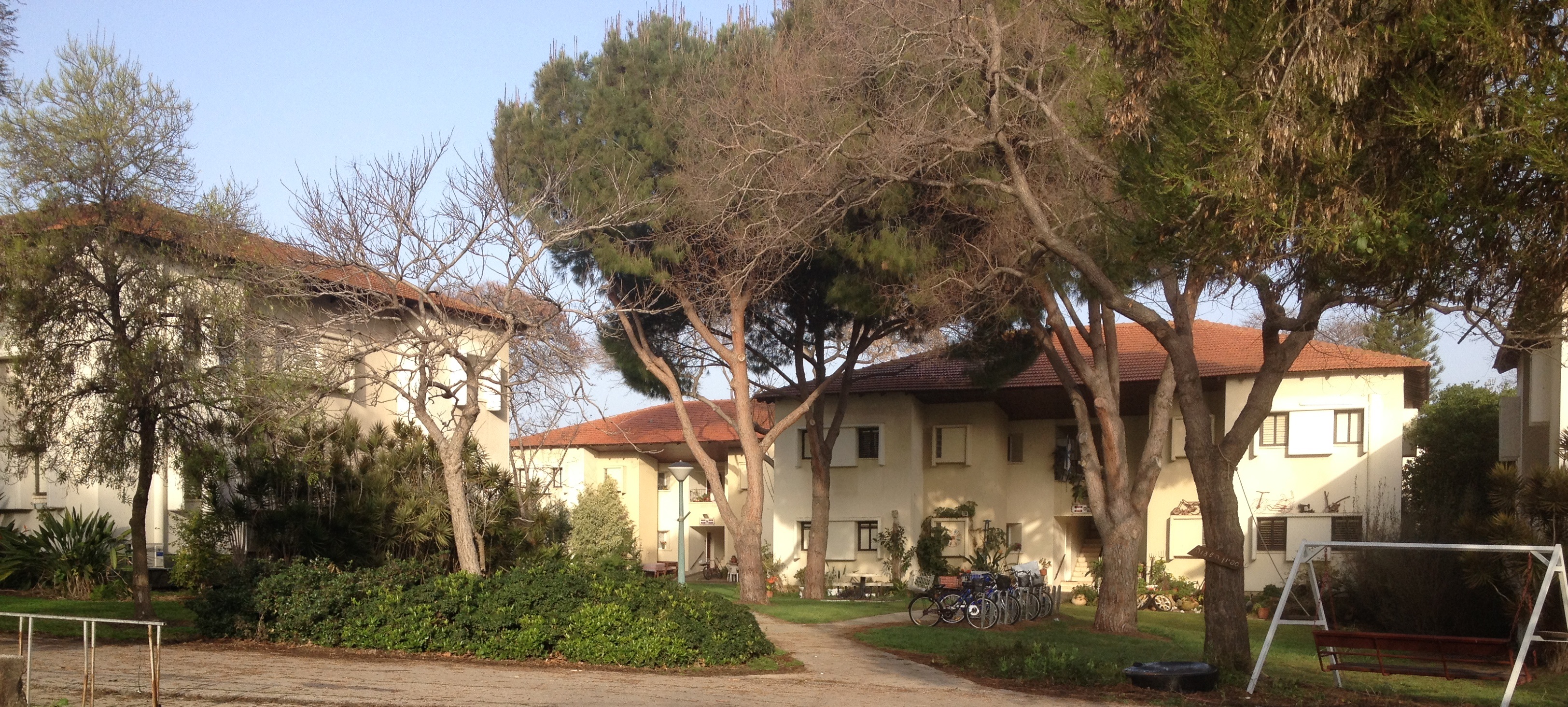
I grew up in Israel. When I share that with people, they often ask me: ‘So, did you grow up in a kibbutz?’ The kibbutz as a way of life, has become famous the world over. Volunteers from various countries arrive annually to work and study in the many kibbutzim around the country, but most people in Israel, myself included, don’t live in them. I grew up in the city. I spent very little time on kibbutzim, mostly when I was sent to a summer camp which was held there, but never really living, and never as an adult.
The opportunity to spend time on a kibbutz recently and look at it with new insights came semi-unexpectedly: this time it was not my mother sending me there, but my daughter and as part of the program she joined, was assigned Kvutzat Yavne as her home.
Kvutzat Yavne is located 5km east of the city of Ashdod, about an hour of south Tel Aviv. In 2007 census, it had a population of 1,100. It is unusual for several reasons: one, it is one of very few religious kibbutzim in the country, and two, it is one of the last strongholds of a kibbutz which has not been privatized, thus exhibiting some of the typical aspects of the old fashion kibbutz.
It’s five o’clock in the morning and I can’t sleep. The noise outside is almost deafening yet pleasant. I wonder if the kibbutz members still hear this outdoors choir of chirping, tweeting, peeping, calling, waking up on this new day from among the ficus, acacia, cypresses and eucalyptuses, planted here since the 1940’s when the kibbutz was founded.
Actually, the idea of Kvutzat Yavne was conceived in Germany. The intention of the founders was to make the area near ancient Yavne (from which it takes its name) the site of a religious kibbutz and a yeshiva. These founders, members of the Religious Zionist movement, began to prepare themselves for agricultural work on German farms in 1929. Shortly thereafter, they immigrated to then Mandate Palestine. They initially settled near Petah Tikva (north east of Tel Aviv) on land purchased by a Jewish-owned German company. Finally, in 1941, the 180-person group of German Zionists, began to build Kvutzat Yavne at its intended location. The kibbutz continued to grow, joined by German, American, and Sabras (native Israelis). It came to be known as the cradle of the Religious Kibbutz Movement, with which the kibbutz is associated.
And if we’re already on history, a word about its name and past: Yavne comes from the Hebrew root b.n.h., meaning to build. Yavne was one of the major ancient cities in the southern coastal plain. Excavations were carried out on the ancient tel, a raised mound, (raised due to its historical layers) located north of the kibbutz. The tel was inhabited, possibly continuously, until the British Mandate period. During some periods, especially the Byzantine period, settlement expanded to cover part of the plain and hills surrounding the tel.
Salvage excavations carried out in 2001 by the Israel Antiquities Authority uncovered several burials at the northern foot of the original tel. Most of the burials are dated to the later Iron Age. One burial points to a late Bronze Age occupation.
The Bible refers to Yavne’el (Joshua 15:11; 2 Chron. 26:6-8) (sometimes transliterated as Jebneel), a border city between the tribal allotments of Judah and Dan. In Roman times, the city was known as Iamnia, also spelled Jamnia. It was bequeathed by King Herod upon his death to his sister Salome. Upon her death it passed to Caesar Augustus who managed it as a private imperial estate, a status it was to maintain for at least a century.
After the destruction of the Second Temple in 70 CE, Rabban Yochanan Ben Zakkai moved the Sanhedrin out of Jerusalem to Yavne in what is known as one of the boldest and insightful moves in Jewish history, practically saving Judaism from total devastation. Some scholars believe the Council of Yavne met there. The Sanhedrin left Yavne for Usha in the north in 80 CE and returned in 116 CE.
Byzantine period finds from excavations include an aqueduct east of the tel, and a kiln. In 2007, remains ranging from the Early Islamic period until the British Mandate period were uncovered. An additional kiln, and part of a commercial/industrial area were uncovered at the west of the tel in 2009.
The Crusaders called the city Ibelin and built a castle there in 1141. Its namesake noble family, Ibelin, was important in the Kingdom of Jerusalem and later in the Kingdom of Cyprus. Ibelin was captured by Saladin in 1187. Salvage excavations at the west of the tel unearthed a stash of 53 Crusader coins of the 12th and 13th centuries.
Maqam Abu Hurayra, described as “one of the finest domed mausoleums in Palestine”, is located in the city of Yavne, a few km north of the kibbutz. Since the 12th century, it has been known as a tomb of Abu Hurairah, a companion (sahaba) of the Islamic prophet Muhammad. Some Jews believe that the tomb is the burial place of Rabban Gamaliel of Yavne.
I get up and go out. People here rise early, and head to their various jobs. Although few study or work away from home, many still work on the kibbutz. Most of Yavne’s agricultural production is in field crops, fruit orchards, poultry, and dairy, all contained within approximately 1,500 acres (6.1 km2) of land. Major industry located on the kibbutz includes olive and cucumber processing plants, the Adi watch factory, and the largest chicken hatchery in the country (dispatching 600,000 chicks per day). It is also the location of Yeshivat Kerem B’Yavneh, the first Hesder Yeshiva (Yeshiva / religious advanced studies combined with army service). The kibbutz used to run a Jewish studies program preparing candidates for conversion to Judaism, but this is no longer available. There used to be a Hebrew ulpan (intensive Hebrew learning) for both Jewish students and gerim (converts). Now it hosts Garin Tzabar, the lone-soldiers program my daughter joined.
As this is a religious kibbutz, every morning, every evening, every Shabbat, there are religious services. People get together for prayer, 2-3 times a day! On weekdays, morning prayers begin at 7:00am. New kibbutz members, members of special programs and even guests are expected to come to synagogue regularly, or be frowned upon (and in case of residents awaiting membership is might hinder their chances to be accepted.
This kibbutz is designed wisely and beautifully. The synagogue is at the center (bottom pictures), and that is the tallest building – as is prescribed by Jewish law. It towers to (only) two (tall) stories high on a small mound. Next to it, are the dining hall, offices, as well as local and regional schools. On one side of the kibbutz are the factories and on the other – the families’ homes.
My car, by the way, has been left in one of 20 or so small parking lots scattered around the kibbutz, mostly on the outside circumference, and very few in an inner coves. The idea of driving through the kibbutz with a car is almost sacrilegious. People mostly walk and bike.
In addition, there is also no public transportation bus that goes into the kibbutz, only to the near-by intersection, so, since in general members don’t own a car (you can sign up for a kibbutz car if you need to go somewhere the bus won’t take you-), those coming and going from and to the kibbutz, usually have to start with a walk (about 1km) to the nearby bus stop.
NPR recently aired a report about a new development in Austin, Texas. Accordingly, and not surprisingly, people benefit greatly from living in a community. The physical surroundings of that community support greater social interactions as well as physical activities, such as the fact that you “must” walk – as opposed to having your car in front of the house, ready to go. In addition, there are communal events, meetings, meals and celebrations that everybody is expected to be at.
Indeed, data are presented demonstrating that the life expectancy (LE) of kibbutz members–both men and women–is higher than that of the overall Jewish population in Israel. Closer inspection of the death rates at various ages reveals that, from age thirty, those of kibbutz women are lower than those of the Jewish population. Although those of kibbutz men are actually higher until age forty-nine (I suspect that has to do with a more rigorous army service and higher casualty rate among the typically more “idealistic” kibbutz members – MK), nevertheless the LE of kibbutz members (based on death rates) surpasses that of Jews in Israel. These data add to and support other research findings illustrating the more positive mental health and well-being found among kibbutz members than among other comparative populations. Similarly, the factors contributing to kibbutz members’ life expectancy evolve from this quality of life, especially as this quality of life affects old age .
My daughter had the great fortune of working in the bike-repair workshop, which is open about 4 days a week, and cares for the kibbutz many bicycles. As you can see from the pictures below, the bikes have a tag on back with the “owner’s” name, or better – the primary caretaker of that particular bike, but conversations in my daughter’s group sound more like this:
Friend I: I need to go get mail from the office (for the group)
M: take my bike.
Friend I: but then I need to go to work in the field
M: leave my bike at the office and we’ll get it later.
An hour or so later, M to Friend II: hey, how did you get here so fast?
Friend II: I saw your bike near the office and no one form our group was there, so I figured I can take it to get back from the dining hall…
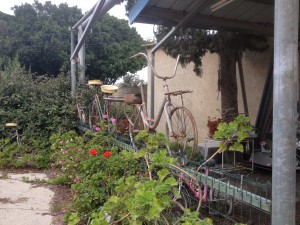 One of the core values is “Torah Ve’Avoda” (valuing Torah learning along with physical labor, as opposed to having to choose either one, learning or work). In one of my weekday mornings there, I noticed the kibbutz rabbi walking out of the synagogue. I was pretty far and I don’t know the man, so how would I know it’s the rabbi? No one else might be seen on a weekday wearing black slacks and a white shirt. Most everybody else is in their “kibbutz uniform” (and he is too, only his looks remarkably different). I put “uniform” in quotation marks, because there is no official uniform but rather, a way people dress here; a way dictated by this specific kibbutz culture, just like other organizations create their own culture, not by words, but by quiet modeling . It’s so strong, that I even packed a hat and some scarves ahead of time, just in case, knowing this might be expected, yet it’s also relaxed and the style itself, quite comfortable.
One of the core values is “Torah Ve’Avoda” (valuing Torah learning along with physical labor, as opposed to having to choose either one, learning or work). In one of my weekday mornings there, I noticed the kibbutz rabbi walking out of the synagogue. I was pretty far and I don’t know the man, so how would I know it’s the rabbi? No one else might be seen on a weekday wearing black slacks and a white shirt. Most everybody else is in their “kibbutz uniform” (and he is too, only his looks remarkably different). I put “uniform” in quotation marks, because there is no official uniform but rather, a way people dress here; a way dictated by this specific kibbutz culture, just like other organizations create their own culture, not by words, but by quiet modeling . It’s so strong, that I even packed a hat and some scarves ahead of time, just in case, knowing this might be expected, yet it’s also relaxed and the style itself, quite comfortable.
Most man who work on the kibbutz wear blue-collar work clothes; some wear slacks and a botton –down shirt, and chances are, those work – or go to school – elsewhere. There are also some “outside” workers, people who are hired by the factories and come here daily to work. Unlike the kibbutz established population, the former are mostly Russian, Ethiopian or kibbutz young adults starting their lives. Most men here, regardless of whether they are kibbutz members or not, wear a “yarmulke” or “kippa” (a skull-cap). Women wear mid-cuff skirts, loose pats, t-shirts and long sleeve loose shirts, no shorts, mini-skirts, spaghetti straps etc. Most married women wear some form of head-covering, a hat, scarf, or perhaps a half-way bandana, like my daughter’s kibbutz “mom” in the picture below. Interestingly, the kibbutz has a matpera, a sewing mini-factory (also in picture below) where clothes are mended but also created, for example, when girls needed something both modest and comfortable for sports or beautiful Shabbat dresses, and some are sold in the kibbutz store.
The matpera is the 3rd floor in a building which belongs to “anaf habeged”, the clothing arm of the kibbutz (you can get there by following the sign below). It includes a wash and dry laundromat (and iron if needed)s service which kibbutz members provide for one another (based on skills or taking turns with chores, kibbutz members works in the various services). The Laundromat is amazing: members bring in their bag of dirty clothes, marked with their name, initials or number, and get it back within a day or two, clean and folded in a cubby assigned to them.
One of the fun places on the kibbutz is its “2nd hand store”, located at the way bottom on that same building, and better described as a “clothing library”. It’s a store in looks but there is no exchange of money. Items here were often forgotten for too long in the Laundromat (after the wash and need to be in decent shape). Just walk in, browse through the nicely organized shelves, and take any item you fancy.
With such comfort, why would anyone ever want to get a washing machine? I too was surprised when I walked through the “newer” parts of the kibbutz, which, admittedly, are a little further from the Laundromat and the kibbutz center, and there, came across a quadruplex with not one but three different washing machines! Perhaps this highlights the eternal kibbutz challenge of what happens when a great idea is faced with human nature. The ideal is so beautiful – “each will give what they can and get what they need”; equality will reign; modesty in all. And yet, we “need” three washing machines in practically the same porch.
And one more note about clothing: My visit there coincided with the upcoming celebrations of Purim, a holiday based on the Biblical story of Esther and loosely translated as Jewish Halloween or Mardi-Gras. The 2nd hand store was open extra hours, for members to choose their costumes, which can range from animals to kings, princesses, visitors from around the world and more. Costumes can be elaborate and include make-up and wigs, and yet, modesty rules will still apply.
The kibbutz is big on celebrating holidays together, and Purim is just one such example when even the central dining hall “dresses up” too, this time as a soccer field, with green fussy carpet, cardboard players, tables and “bleachers” around, signs and more.
Indeed, in many kibbutzim, the old fashion “central dining hall” has been replaced with members making their own homemade meals in their own personal kitchenettes, but not in Kvutzat Yavne. Here, breakfast, lunch and dinner are still served in the communal dining hall that can accommodate few hundred at a time. Meals are excellent, tasty, diverse, with veggie dishes and no salt and other dietary needs but I noticed, almost no desserts. There are lots and lots of fresh fruits and vegetables; variety of colorful pickles from the kibbutz factory; comfort food, especially for lunch which is the biggest meal of the day with a choice of dishes for lunch – veggie, chicken, and meat (not uncommon to have 3 different options to choose from, on top of the buffet of salads around; there’s always fresh bread – not baked on site but brought in daily, tea and coffee, and our childhood highlight, faucets that spout not just water but orange juice and soda. Members don’t have to eat here, and for those who are not interested in communal dining three times a day, there is also a table with zip-lock bags for you to take from the stuff available to your own home. If you do eat in the dining hall, you’re expected to clean up after yourself and carry your dishes to the washing station in back. The message that we’re all in this together is not just a slogan, but a well-practiced idea that permeates everything.
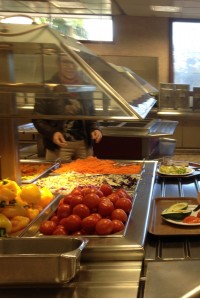
The languages heard in the dining hall include Hebrew, English, Ethiopian, Russian, and French. The tone is pretty quite – though again, of course, no one supervises and that is the local culture (this might be very specific to this kibbutz which as mentioned, originated by a group of German Jews and their mannerism is still prevalent). I am impressed by the flow of conversations around the tables. Elections are near and people discuss politics; they discuss family, kibbutz, and work duties; they discuss Torah and share commentaries from the weekly reading.
This week the reading is from the book of Exodus, about building the Tabernacle, a mobile Temple the Children of Israel carried with them in the desert. G-d says: “Make Me a sanctuary so I may dwell among them” (Exodus 25:8), and the question is asked, how can the text say, make me, so I dwell among them? If they make “Him” a sanctuary, should He live in it? But the commentary explains that G-d doesn’t need a sanctuary for He is everywhere, but when we jointly create His “home”, he dwells among us.
The feeling of people jointly busy in meaningful, spiritual work is very obvious here. I walk back to my guest room. I have a key, but they fact I care about such things, like a key, just shows I’m ‘not from around here’. Homes are rarely locked – what would you lock if all you have you got from the kibbutz which only has what we all put in it?? Things are left outside, not in a careless kind of way, but because they are safe.
And while on the issue of safety, Kvutzat Yavne is less than 40km from the Gaza Strip. During the last wars and “operations”, Kvutzat Yavne often came under attack. The structures pictured below have been used and reused for different things: a basketball hoop, an art club, a gaming room, a mural. It’s sad to still see them among this peaceful kibbutz, the old bomb-shelters.
 And perhaps also along with “safety”, questions are often raised visa-vie life on the kibbutz when examined through the lens of attachments theory. Once upon a time, kibbutzim had “communal dorms” for kids from infants through high school. Children wouldn’t sleep in their parents’ home but go at night to their own “children’s house” (beit yeladim). This way parents could focus more energy on “building the country” and kids were “taken care of”. Debates about this issue were fierce. Although very common initially, most kibbutzim obliterated the traditional “children’s house” in the 1970-80’s with the last kibbutz (Bar’am in the Upper Galilee) doing so in 1997, after realizing the major potential negative impact this system had on its members . Then again, studies show that this system was hardest on the moms, then dads, and that most kibbutz graduates remember who experienced it, remember it as a positive experience. Some studies demonstrated that this system had negative influence on relationships between siblings, impacted maternal deprivation and more. The movie “Munich” shows its hero as someone who grew up “without a mom” (in a joint kibbutz system) and thus learned to view “the country” as his mom. All this might be true. At the same time, a quick observation shows that people’s social skills (here and now, which most likely is not at all representative) are generally good. They don’t only hold pleasant conversations, they notice another (I was asked if I need help several times in a short visit, as it was obvious I’m not from there and might be “lost”) and care for each other.
And perhaps also along with “safety”, questions are often raised visa-vie life on the kibbutz when examined through the lens of attachments theory. Once upon a time, kibbutzim had “communal dorms” for kids from infants through high school. Children wouldn’t sleep in their parents’ home but go at night to their own “children’s house” (beit yeladim). This way parents could focus more energy on “building the country” and kids were “taken care of”. Debates about this issue were fierce. Although very common initially, most kibbutzim obliterated the traditional “children’s house” in the 1970-80’s with the last kibbutz (Bar’am in the Upper Galilee) doing so in 1997, after realizing the major potential negative impact this system had on its members . Then again, studies show that this system was hardest on the moms, then dads, and that most kibbutz graduates remember who experienced it, remember it as a positive experience. Some studies demonstrated that this system had negative influence on relationships between siblings, impacted maternal deprivation and more. The movie “Munich” shows its hero as someone who grew up “without a mom” (in a joint kibbutz system) and thus learned to view “the country” as his mom. All this might be true. At the same time, a quick observation shows that people’s social skills (here and now, which most likely is not at all representative) are generally good. They don’t only hold pleasant conversations, they notice another (I was asked if I need help several times in a short visit, as it was obvious I’m not from there and might be “lost”) and care for each other.
The kibbutz also quite centrally located a home for its elders, as many of its early generation members are now in their 90’s. By staying in a “home” on the kibbutz, they do not have to move far away, their children, if opted to live on the kibbutz, and grandchildren (there are a couple of families who now have 5th generations babies!) can visit daily and easily and they can remain an active part, as much as is possible, of the life they created.
It’s sunset on the kibbutz by now. Children come back from school, and families spread blankets and mats on the grass, where they sit with friends, a cup of tea, some fruits and sunflowers seeds, discussing the day’s events. The olive groves change from silver to dark green. Bats fly between the branches; a rabbit scurries below. I don’t know if I can live 10 feet from a next door neighbor who would know about me more than I know about myself. My life includes many idiosyncrasies and the chances of me being accepted to a place like this are lower than slim (and yes, one has to be accepted by the membership; you can’t just buy a house here because it’s pretty, no matter how much money anyone can offer). And yet, as I stroll the paths again, the beauty of it shines from everywhere. The kibbutzim have provided an amazing real-life experiment. Some will say, they greatly succeeded; others will say, they miserably failed. Kvutzat Yavne is a place that maybe says either. It realizes that how things worked out here, might not be everybody’s experience, but in its quite and stoic way, it leaves us a lot of food for thought and a lot to learn.



